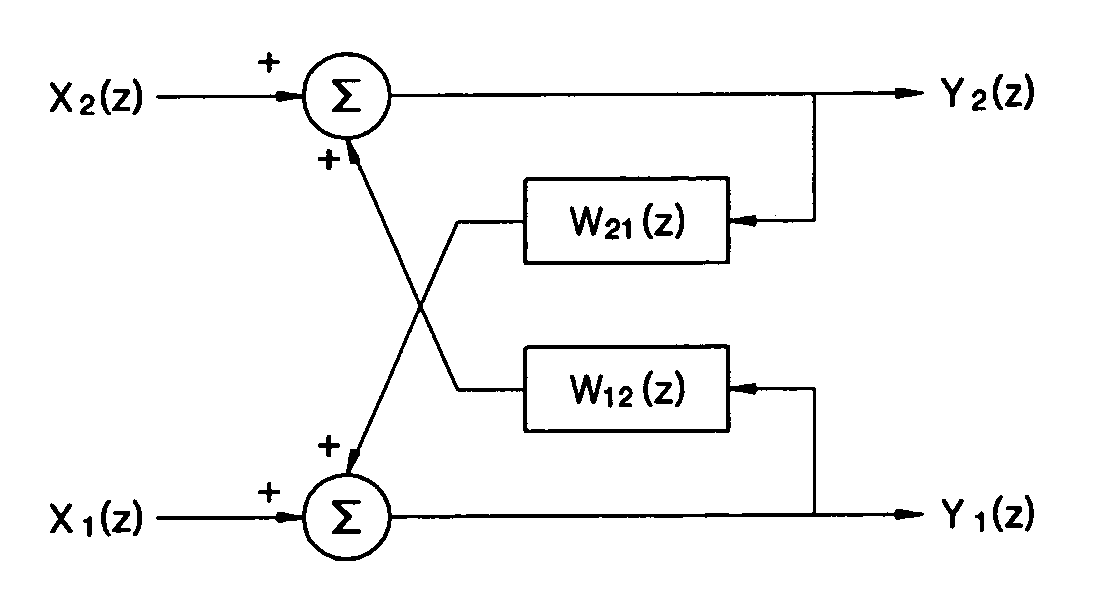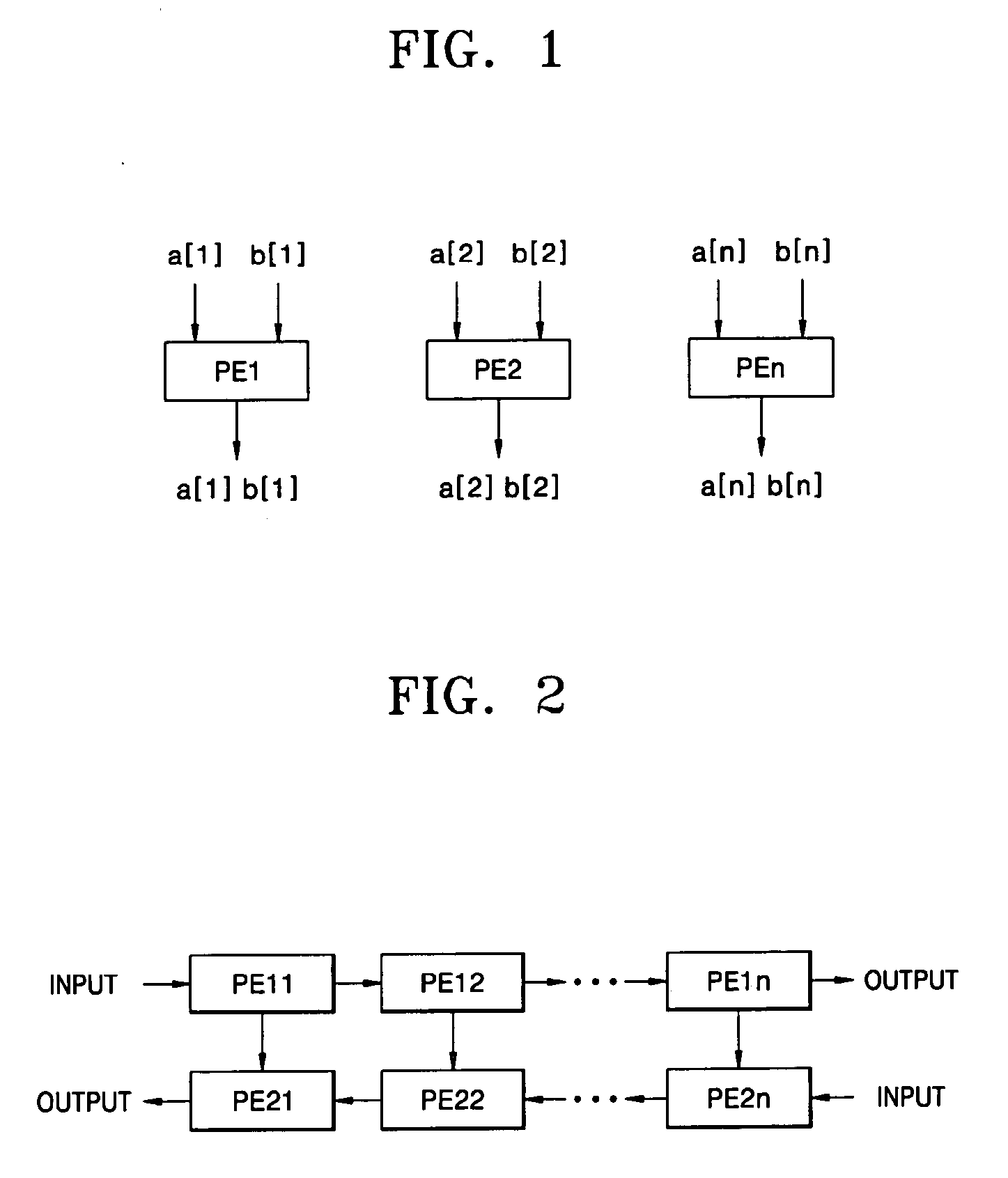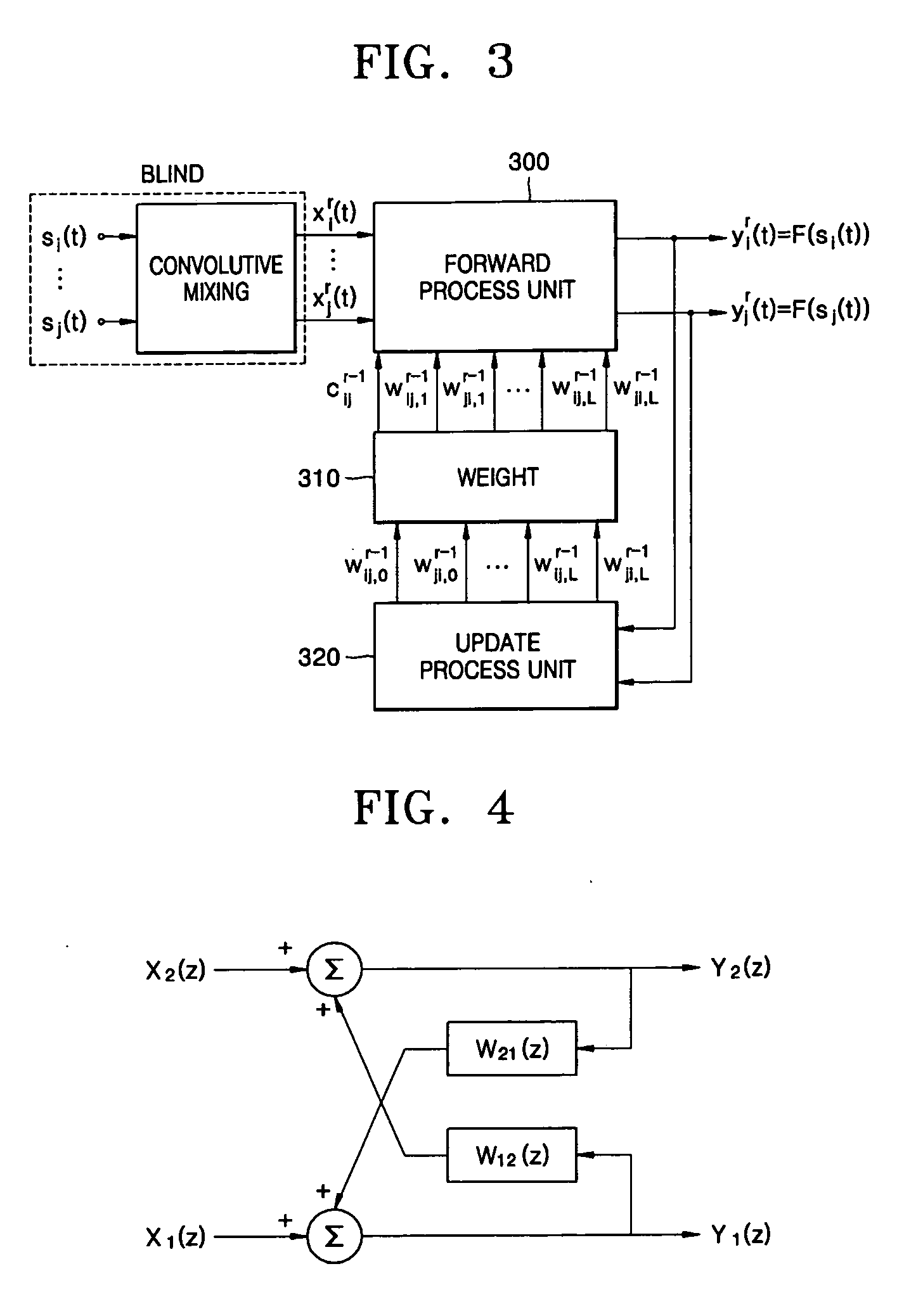Apparatus for separating blind source signals having systolic array structure
a technology of blind source signals and arrays, applied in the field of digital signal processing, can solve the problems of large circuit size, long computation time, and many constraints still exist to efficiently transmit or store digital image information, and achieve the effect of low cost and low power consumption
- Summary
- Abstract
- Description
- Claims
- Application Information
AI Technical Summary
Benefits of technology
Problems solved by technology
Method used
Image
Examples
Embodiment Construction
[0035] The present invention and operational advantages thereof can be fully understood by referring to the accompanying drawings and explanations thereof.
[0036] Now, exemplary embodiments of the present invention will be described with reference to the accompanying drawings to explain the present invention in detail. In the drawings, the same reference numerals indicate the same elements.
[0037]FIG. 3 is a schematic block diagram conceptually illustrating an apparatus for separating blind source signals according to an embodiment of the present invention, which includes a forward process unit 300, a weight process unit 310, and an update process unit 320.
[0038] Basically, the forward process unit 300 receives n input signal vectors xir(t), . . . , xjr(t) based on Equation 3, which will be described below, and obtains n output signal vectors yir(t), . . . , yjr(t) by multiplying the received input signal vectors xir(t), . . . , xjr(t) by second weight values. The update process un...
PUM
 Login to View More
Login to View More Abstract
Description
Claims
Application Information
 Login to View More
Login to View More - R&D
- Intellectual Property
- Life Sciences
- Materials
- Tech Scout
- Unparalleled Data Quality
- Higher Quality Content
- 60% Fewer Hallucinations
Browse by: Latest US Patents, China's latest patents, Technical Efficacy Thesaurus, Application Domain, Technology Topic, Popular Technical Reports.
© 2025 PatSnap. All rights reserved.Legal|Privacy policy|Modern Slavery Act Transparency Statement|Sitemap|About US| Contact US: help@patsnap.com



